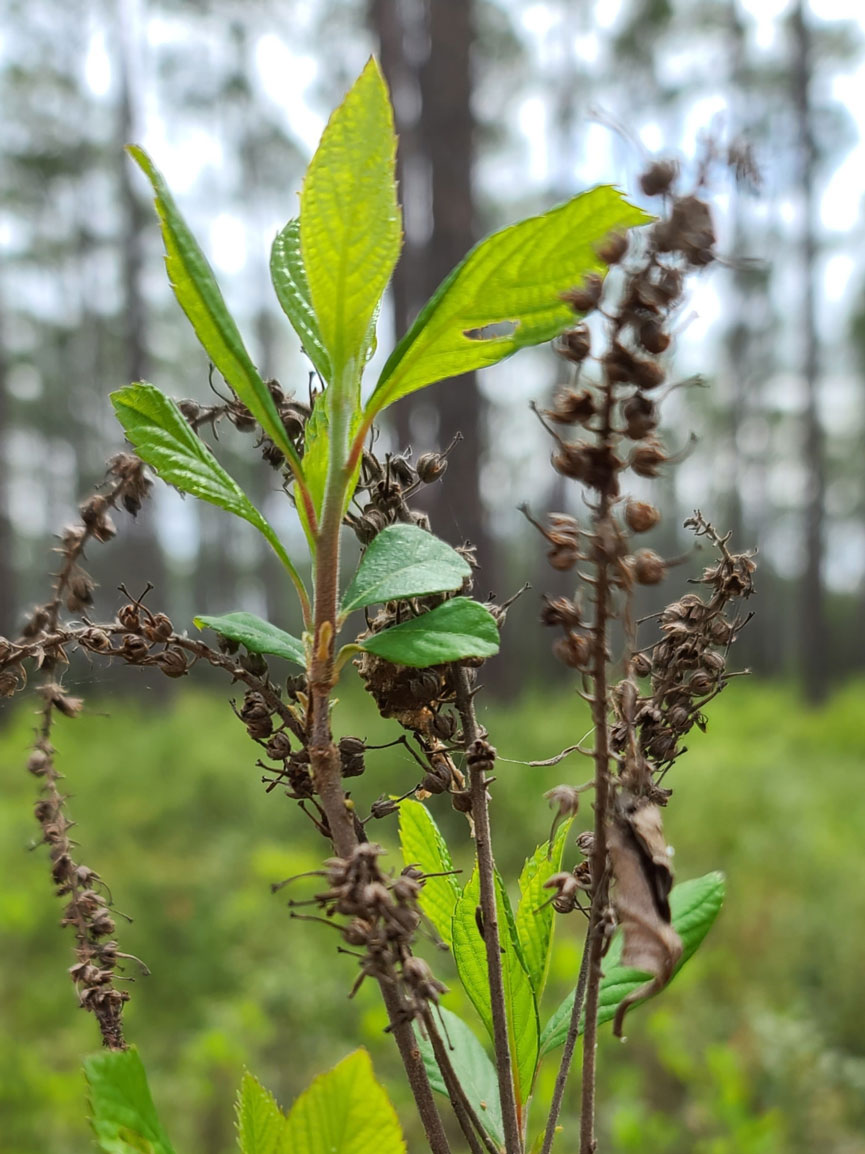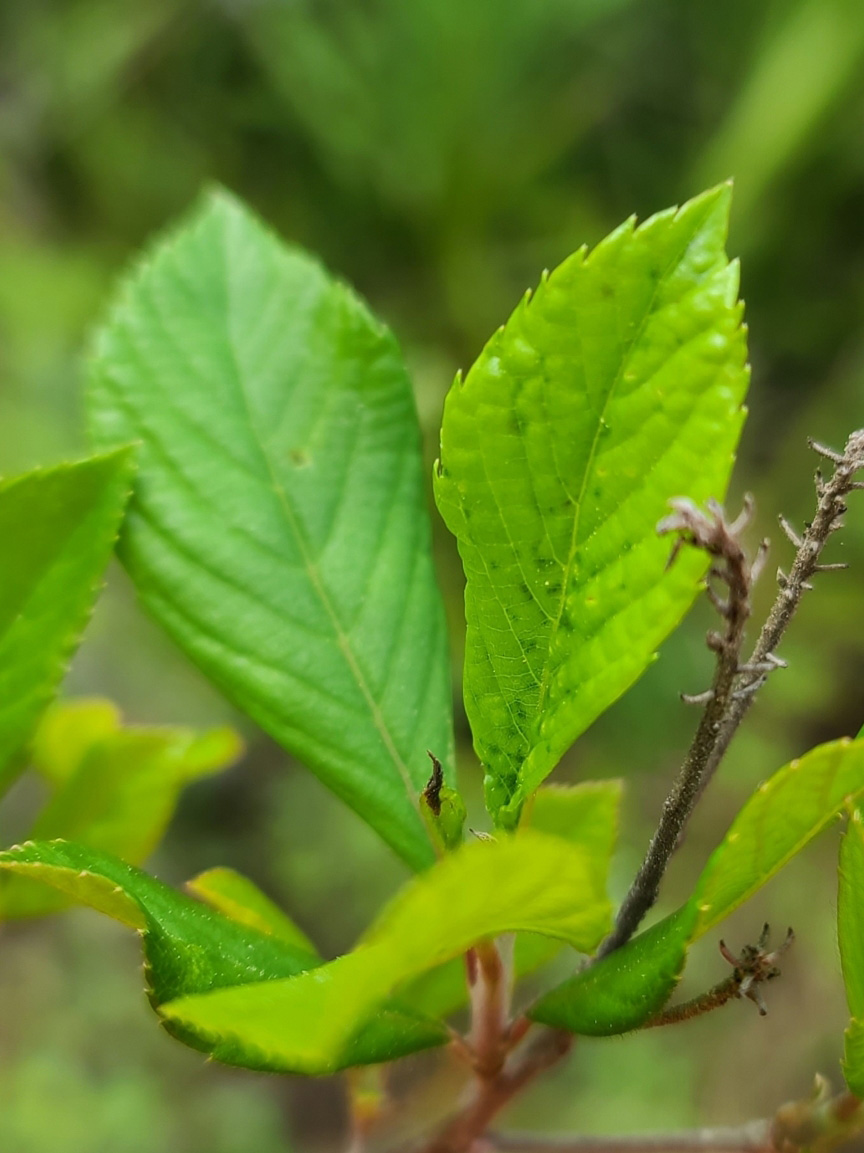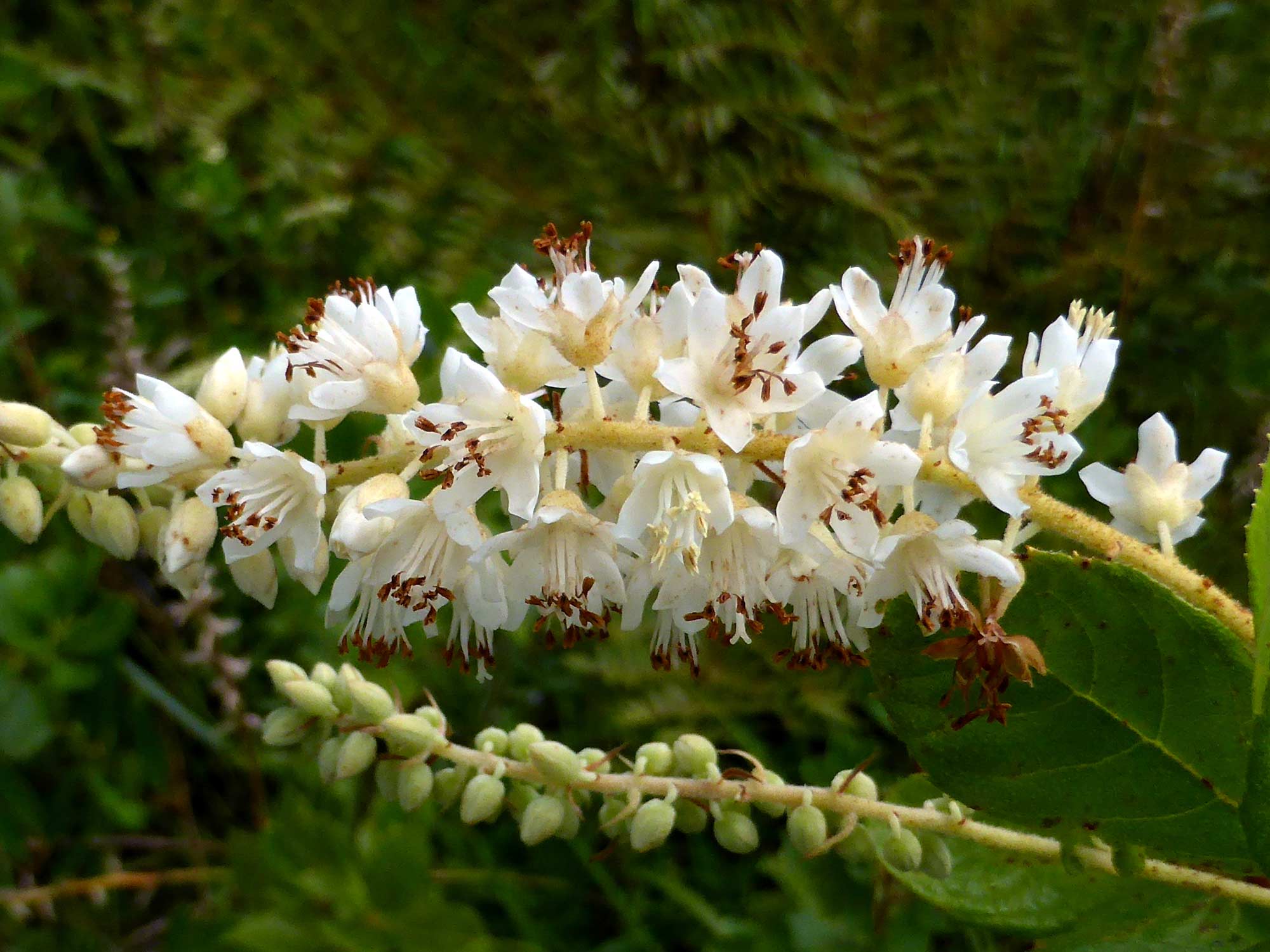Summersweet
Pictured above: Celestial lily (Nemastylis floridana) by Mary Keim. Click on terms for botanical definitions. View post as a PDF.
Summersweet (Clethra alnifolia) is a deciduous flowering shrub found in swamps, wet flatwoods, savannas and bogs. The plant is an excellent plant for wildlife. Its showy, sweet-scented flowers bloom spring through summer, attracting hummingbirds, bees, butterflies and other pollinators. Birds and small mammals consume the fruits.
Summersweet’s flowers are bright white to pinkish and five-petaled. They are held by a calyx composed of five hairy, cream-colored sepals. Stamens number 10. Anthers are creamy white to rusty brown. Flowers are born in long, densely covered terminal or axillary racemes. Leaves are obovate to oblong and petiolate with conspicuous venation and alternate arrangement. Leaf margins are serrated from midpoint to apex. In the fall, the leaves turn a golden hue. Seeds are born in small, round pubescent capsules.


The genus name Clethra is from the Greek klethra, meaning “alder.” It is so-named because the leaves of some Clethra species resemble alder leaves. The species epithet alnifolia also means “alder-like leaves.” Summersweet is the only member of the Clethra genus native to Florida. It is sometimes referred to as Coastal sweet pepperbush because the mature fruits look a bit like peppercorns.
Family: Clethraceae (White alder family)
Native range: Panhandle, few North and Central Florida counties
To see where natural populations of Summersweet have been vouchered, visit florida.plantatlas.usf.edu.
Hardiness: Zone 8A–9B
Lifespan: Perennial
Soil: Moist to wet acidic soils
Exposure: Full sun to partial shade
Growth habit: 3–10’ tall
Propagation: Seed, cuttings, division
Garden tips: Summersweet does well in a landscape with consistently moist soils. Once established, it requires little maintenance, although it does not tolerate periods of drought. The plant can be pruned to maintain a lower height and is suitable for a hedge. It spreads by underground runners.
Plants are occasionally available from nurseries that specialize in Florida native plants. Visit www.PlantRealFlorida.org to find a nursery in your area.

